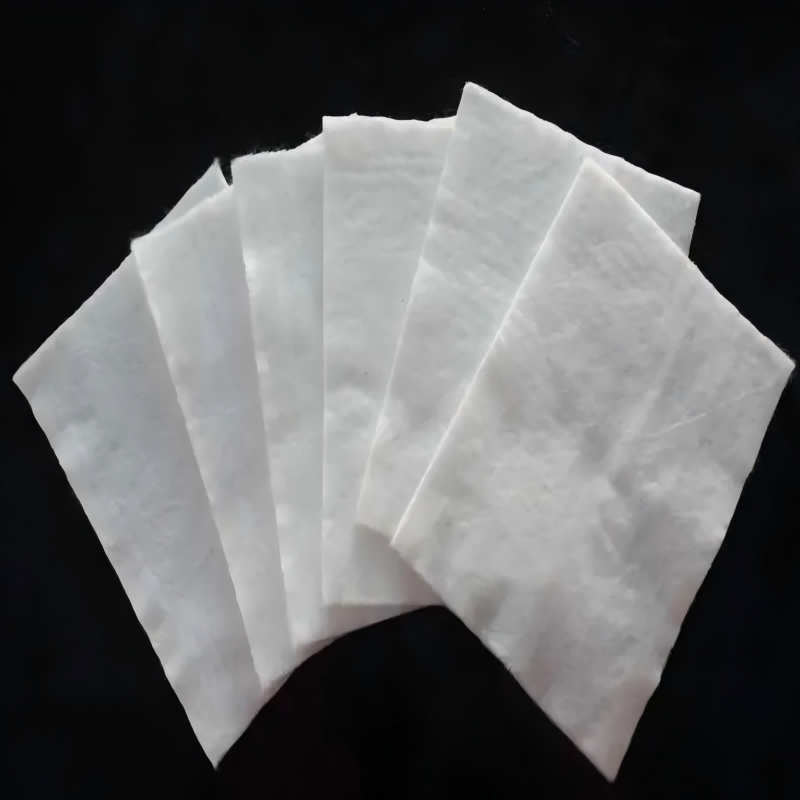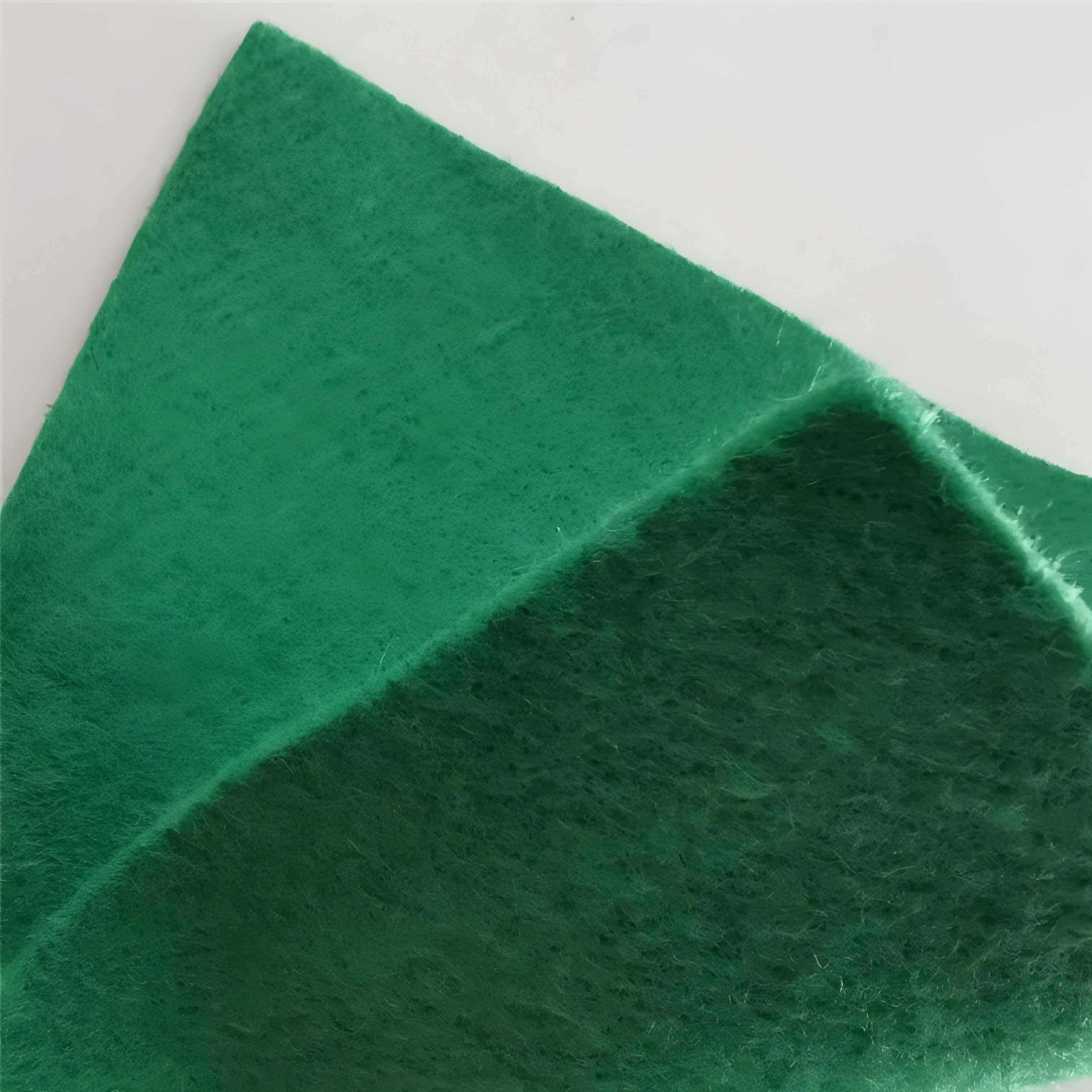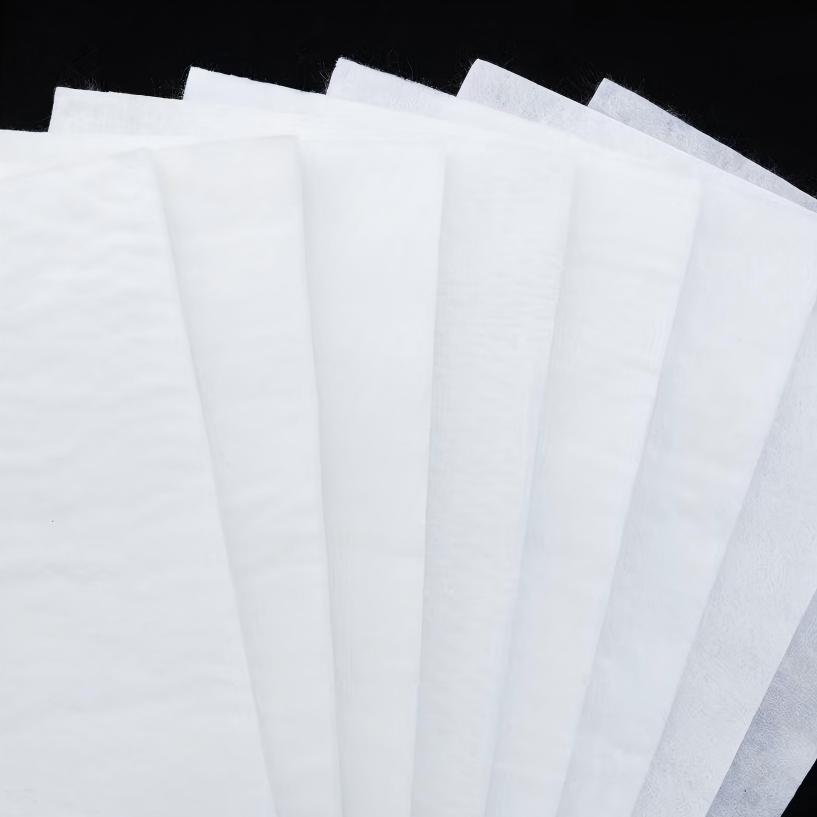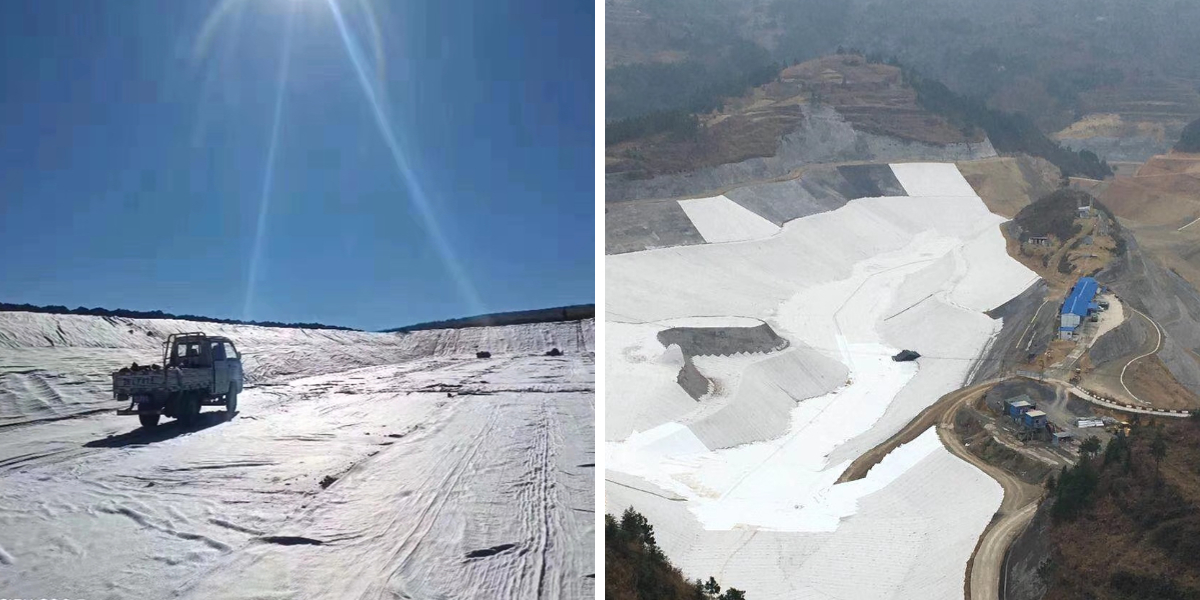Non Woven Landscape Fabric
1.Good filtering performance:Can intercept soil particles and allow water to pass through, avoiding soil loss.
2.Efficient drainage:Can quickly drain soil water and reduce moisture content.
3.Strong reinforcement ability:Enhance soil bearing capacity and reduce settlement deformation.
4.Reliable isolation:Effectively prevent mixing of different materials and ensure stable performance.
5.Excellent protection:Resist water erosion and wind erosion, and protect the engineering structure.
6.Convenient construction:Easy to operate, can save construction costs and time.
Product Introduction
Material characteristics
Non Woven Landscape Fabric is mostly made from high molecular weight synthetic fibers such as polypropylene and polyester, processed through processes such as needle punching, weaving, and hot melt bonding. Its finished product is lightweight and has excellent flexibility, which can easily adapt to the bending and undulating of different terrains. At the same time, it has a certain mechanical strength, which can meet the basic stress requirements in engineering construction.
Core functions
With its unique structural design, geotextiles integrate multiple practical functions: they can intercept soil particles and release moisture during filtration, avoiding soil loss; During drainage, water can be quickly drained through porous channels to reduce soil moisture content; When reinforcing, rely on its own tensile strength to enhance the bearing capacity of the soil and reduce settlement deformation; During isolation, materials of different properties (such as soil and sand) can be separated to prevent mixing from affecting performance; It can resist water flow erosion and wind erosion during protection, and protect the engineering structure. These functions enable it to accurately address various practical problems in engineering.
Widely used
In hydraulic engineering, it is commonly used for dam filtration and river slope protection; In the field of transportation, road and railway subgrade reinforcement and pavement drainage cannot be separated from it; During construction, foundation isolation and anti-seepage treatment can also play a role; In environmental protection projects, anti-seepage isolation of landfills and water purification of artificial wetlands have their presence; In terms of agriculture, the application of anti-seepage in irrigation channels and soil and water conservation in farmland can also be seen. As a multifunctional material, it provides important guarantees for the stability of various engineering projects.
Product Parameters
project | metric | ||||||||||
Nominal strength/(kN/m) | |||||||||||
6 | 9 | 12 | 18 | 24 | 30 | 36 | 48 | 54 | |||
1 | Longitudinal and transverse tensile strength / (kN/m) ≥ | 6 | 9 | 12 | 18 | 24 | 30 | 36 | 48 | 54 | |
2 | Maximum elongation at maximum load in longitudinal and transverse directions/% | 30~80 | |||||||||
3 | CBR top penetration strength /kN ≥ | 0.9 | 1.6 | 1.9 | 2.9 | 3.9 | 5.3 | 6.4 | 7.9 | 8.5 | |
4 | Longitudinal and transverse tearing strength /kN | 0.15 | 0.22 | 0.29 | 0.43 | 0.57 | 0.71 | 0.83 | 1.1 | 1.25 | |
5 | Equivalent aperture O.90(O95)/mm | 0.05~0.30 | |||||||||
6 | Vertical permeability coefficient/(cm/s) | K× (10-¹~10-), where K=1.0~9.9 | |||||||||
7 | Width deviation rate /% ≥ | -0.5 | |||||||||
8 | Unit area mass deviation rate /% ≥ | -5 | |||||||||
9 | Thickness deviation rate /% ≥ | -10 | |||||||||
10 | Thickness coefficient of variation (CV)/% ≤ | 10 | |||||||||
11 | Dynamic perforation | Puncture hole diameter/mm ≤ | 37 | 33 | 27 | 20 | 17 | 14 | 11 | 9 | 7 |
12 | Longitudinal and transverse fracture strength (grab method)/kN ≥ | 0.3 | 0.5 | 0.7 | 1.1 | 1.4 | 1.9 | 2.4 | 3 | 3.5 | |
13 | Ultraviolet resistance (Xenon arc lamp method) | Longitudinal and transverse strength retention rate% ≥ | 70 | ||||||||
14 | Ultraviolet resistance (fluorescence UV lamp method) | Longitudinal and transverse strength retention rate% ≥ | 80 | ||||||||
Product Application
Water conservancy engineering
In dam construction, geotextile is laid between the dam body and the foundation as an anti filter layer to intercept soil particles, prevent soil material from flowing away with seepage, and enhance the anti-seepage performance of the dam body; During river regulation, covering it on the surface of the slope can resist water erosion, protect the soil on the bank slope, reduce soil erosion, and maintain the stability of the river shape.
Transportation Engineering
In the construction of roadbeds for highways and railways, geotextiles are laid under the embankment fill, dispersing loads through their own tensile strength, enhancing the overall bearing capacity of the roadbed, and effectively reducing roadbed settlement and uneven deformation; Laying between the base layer and the surface layer of the road can timely drain the accumulated water in the base layer, avoid the softening of the base layer caused by water immersion, and ensure the strength and durability of the road structure.
Construction Engineering
During the treatment of building foundations, geotextiles can separate the foundation soil from materials such as sand and gravel cushion layers to prevent a decrease in the bearing capacity of the foundation after mixing different materials; At the same time, its porous structure can accelerate the discharge of water from the foundation soil, reduce the moisture content of the foundation, and avoid problems such as building settlement and cracking caused by soil softening.
Environmental Protection Engineering
In landfill sites, geotextiles are laid as isolation layers between garbage and soil, which can effectively prevent the infiltration of leachate generated during the landfill process into the surrounding soil and groundwater, reducing the risk of environmental pollution; In the construction of ecological projects such as artificial lakes and wetlands, the use of anti-seepage membranes can assist in enhancing the anti-seepage effect, filtering impurities in the water, maintaining clear water, and protecting the ecological environment.
In the field of agriculture
Laying geotextile in farmland irrigation channels can reduce water leakage losses, improve water resource utilization efficiency, and resist the erosion of channel walls by water flow, thereby extending the service life of the channel; In soil and water conservation projects, covering the slope with geotextile can slow down the erosion speed of rainwater on the slope soil, protect the slope vegetation, prevent soil erosion, and maintain the fertility of farmland.
Summary
Geotextiles play a key role in many fields such as water conservancy, transportation, construction, environmental protection, agriculture, etc., thanks to their multiple functions of filtration, reinforcement, isolation, drainage, and protection. It not only ensures the structural stability and service life of various projects, but also demonstrates important value in water resource conservation, ecological environment protection, and other aspects. It is an indispensable practical material in modern engineering construction.












